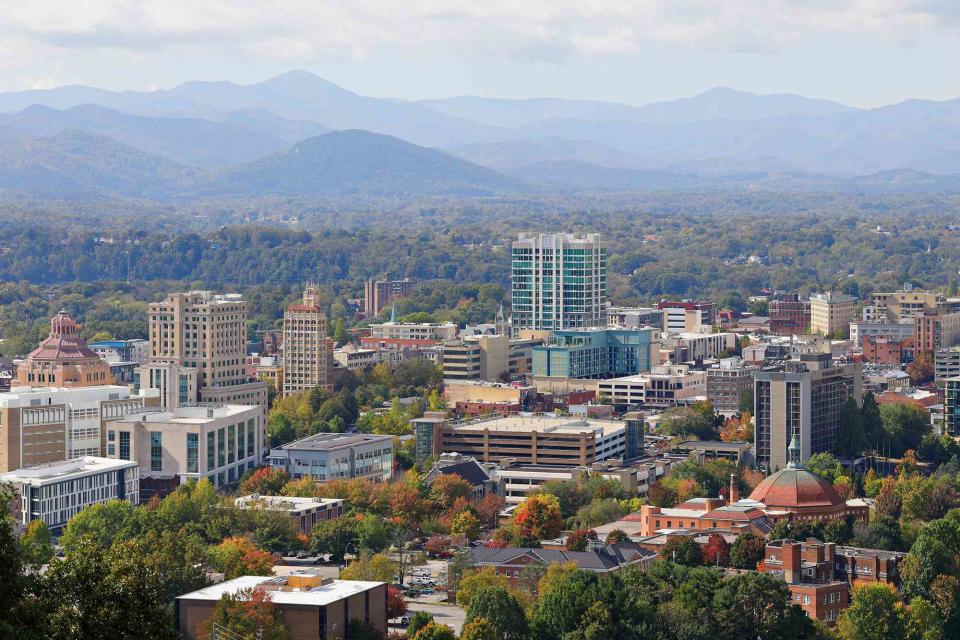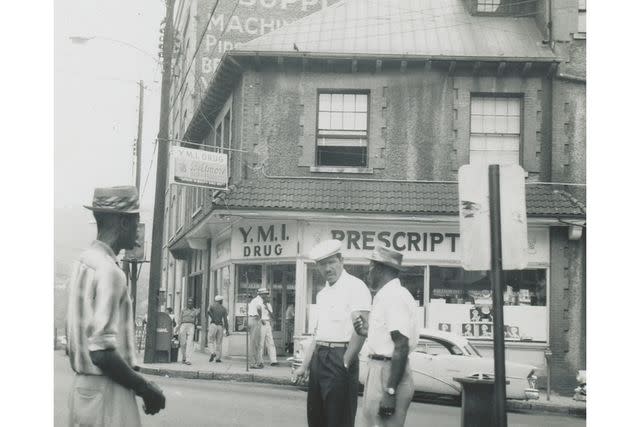This Southern U.S. City Recently Unveiled a 1-mile Black Heritage Trail That Passes Through 3 Historic Neighborhoods
Asheville, North Carolina, is now home to one of the few Black heritage trails in Appalachia.

S. Greg Panosian/Getty Images
Asheville, North Carolina, is a beautiful and artsy city. It’s set along a river in the Blue Ridge Mountains near some of the world’s most biodiverse forests and is home to a vibrant arts scene. But very few people know about Asheville’s Black heritage and culture — a knowledge gap the team behind the new Asheville Black Cultural Heritage Trail is working to fix.
The new walking trail, which opened in December 2023, passes through three historic neighborhoods, sharing information on Asheville’s Black history, significant sites, and stories that have never been shared publicly. The trail is the first of its kind in Western North Carolina and one of just a few Black heritage trails in the Appalachian region.
Its mission? To share, preserve, and amplify the stories of Asheville’s Black community and its role in making Asheville the place it is today.
“Our goal was focused on lifting up Black history in an inclusive way by illuminating stories of resilience and resourcefulness. The trail’s completion represents a moment of celebration, unity, and remembrance,” Catherine Mitchell, a community activist who was part of the team that developed the trail, told ExploreAsheville.com.
The Asheville Black Cultural Heritage Trail includes three unconnected segments that pass through three historically significant Black neighborhoods: Downtown, Southside, and the River Area, also known as the River Arts District. Collectively, the three trails are one mile. Along the way, walkers will learn about the city’s Black community (both past and present) through 14 stops and 20 educational panels.
On the trail segment through Asheville’s Downtown, visitors will learn about the ongoing legacy of the YMI Cultural Center, which was one of the first Black community centers in the country and was designed by Biltmore architect Richard Sharp Smith. Downtown is also home to “The Block,” a shopping area that’s experiencing a renaissance of Black-owned small businesses — including Noir Collective AVL, a space that shows the work of Black artists and creators and acts as an event hub. (The Block is also where you’ll find live jazz every Saturday at The Foundry Hotel.)

Courtesy of Isaiah Rice Photograph Collection, D. Hiden Ramsey Library Special Collections, University of North Carolina Asheville, Asheville, NC
In the Southside segment of the Asheville Black Cultural Heritage Trail, you’ll learn about the dark side of “urban renewal,” a series of recent policies that ultimately demolished the homes of half of Asheville’s Black residents, according to ExploreAsheville.com. The Southside section of the trail also focuses on people like John Wakefield Walker, the first Black pulmonologist in America, and provides easy access to eateries like Good Hot Fish, a new restaurant opened by Ashleigh Shanti, a James Beard semi-finalist who competed on Top Chef. Southside is also where you can spot the “Black Lives Matter” mural created by over 20 artists.
Today, the River Area is a haven for creatives, but long before it was transformed into an arts hub, it was the historic center for Black businesses. In this section of the trail, visitors will learn about locals like Matthew Bacoate, Jr., an Asheville civil rights icon who counseled Presidents Nixon and Carter on Black entrepreneurship. Just off the trail, you’ll find the Black-owned Grind AVL coffee shop.

Courtesy of Ricardo Tejeda
The Asheville Black Cultural Heritage Trail is free and open to the public year-round. The 20 interpretive panels along the trail have a QR code that leads to information that is meant to complement the walking trail, including music and stories. A map of the three segments and their suggested stops can be found at exploreasheville.com, although there are also introduction kiosks at the start of each segment.
For more Travel & Leisure news, make sure to sign up for our newsletter!
Read the original article on Travel & Leisure.

